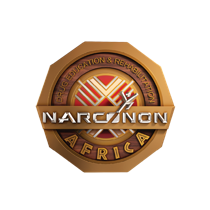The Deadly Grip of Heroin: Understanding the Dangers of a Devastating Drug

Heroin, a powerful and highly addictive opioid, has been at the center of a devastating public health crisis for decades. Its impact reaches far beyond the individual user, affecting families, communities, and entire societies. Despite widespread knowledge of its dangers, heroin abuse continues to claim lives and destroy futures. Understanding the severe risks associated with heroin use is crucial in the fight against this deadly drug.
What Is Heroin?
Heroin is an opioid derived from morphine, a natural substance extracted from the seed pods of the opium poppy plant. It typically appears as a white or brown powder or a sticky black substance known as “black tar heroin.” Users often inject, snort, or smoke heroin, seeking an intense rush of euphoria and relaxation. However, this fleeting high comes at a steep cost, as heroin wreaks havoc on the body and mind, leading to a host of severe and often irreversible consequences.

The Immediate Effects of Heroin Use
When heroin enters the brain, it rapidly binds to opioid receptors, triggering a surge of dopamine that produces intense pleasure. But this rush is accompanied by a range of dangerous effects:
- Respiratory Depression: Heroin slows down the central nervous system, including the respiratory system. This can lead to dangerously slow or shallow breathing, which may result in respiratory failure and death, especially in cases of overdose.
- Nausea and Vomiting: Many users experience severe nausea and vomiting after using heroin, which can lead to dehydration and other complications.
- Itching and Flushed Skin: Heroin can cause intense itching and a flushed, warm feeling across the skin, which may lead users to scratch themselves to the point of injury.
- Clouded Mental Function: Heroin use impairs cognitive function, causing confusion, drowsiness, and an inability to concentrate. This can lead to poor decision-making and risky behaviors.
- Overdose Risk: The risk of overdose is ever-present with heroin use, particularly because the drug’s potency can vary widely. Even a small amount can be deadly, especially when mixed with other substances like alcohol or fentanyl, a synthetic opioid that is significantly more potent than heroin.
Long-Term Health Consequences

The dangers of heroin extend far beyond its immediate effects. Chronic use leads to severe physical and mental health problems that can persist long after the drug’s effects have worn off:
- Addiction: Heroin is incredibly addictive, often leading to dependence after just a few uses. The brain quickly becomes reliant on the drug to feel pleasure, making it difficult for users to quit without professional help.
- Collapsed Veins and Infections: Those who inject heroin are at risk of collapsed veins, abscesses, and infections at the injection sites. The use of shared or unsterilized needles also increases the risk of contracting bloodborne diseases like HIV and hepatitis.
- Liver and Kidney Damage: Heroin use places enormous strain on the liver and kidneys, leading to long-term damage and, in some cases, failure of these vital organs.
- Mental Health Disorders: Chronic heroin use can lead to severe mental health issues, including depression, anxiety, and antisocial behavior. The drug’s impact on brain chemistry can also result in long-term cognitive impairment and memory loss.
- Collapsed Immune System: Heroin weakens the immune system, making users more susceptible to infections and diseases. This is compounded by the poor nutrition and self-care habits often associated with addiction.

Social and Economic Impact
The consequences of heroin addiction extend far beyond the individual user. Families are torn apart as loved ones struggle with the devastating effects of addiction. Children of heroin users often suffer from neglect, emotional trauma, and, in some cases, physical abuse. Communities are also deeply affected by the heroin epidemic.
The increase in drug-related crime, such as theft and violence, strains local law enforcement and judicial systems.
The healthcare system bears the burden of treating overdoses, infections, and other complications related to heroin use, leading to significant economic costs.
Employers face challenges as well, as heroin addiction can lead to decreased productivity, absenteeism, and workplace accidents.
The overall economic toll of heroin addiction is staggering, costing billions of Rands annually in healthcare, criminal justice, and lost productivity.
The Risk of Overdose
One of the most alarming dangers of heroin is the risk of overdose, which has become increasingly prevalent with the rise of synthetic opioids like fentanyl. Fentanyl is often mixed with heroin to increase its potency, but even a tiny amount of this powerful substance can be lethal. This has led to a sharp increase in overdose deaths, with many users unaware that their heroin has been adulterated with fentanyl.
Signs of a heroin overdose include:
- Slow or shallow breathing
- Blue-tinted skin or lips
- Pinpoint pupils
- Unresponsiveness or unconsciousness
- Weak pulse
A heroin overdose is a medical emergency, and immediate action is required to save the individual’s life. Administering naloxone, a medication that can rapidly reverse an opioid overdose, is crucial. However, it is important to note that naloxone is not always effective, especially in cases involving fentanyl, and multiple doses may be required.
Conclusion

Heroin is a deadly drug with far-reaching consequences that extend beyond the individual user. Its powerful grip on the brain and body leads to addiction, health complications, and a devastating impact on families and communities. Understanding the dangers of heroin is essential in preventing its use and helping those who are struggling with addiction find a path to recovery.
While the road to sobriety is challenging, with the right support and treatment, it is possible to overcome the deadly grip of heroin and reclaim a life of health and hope.

